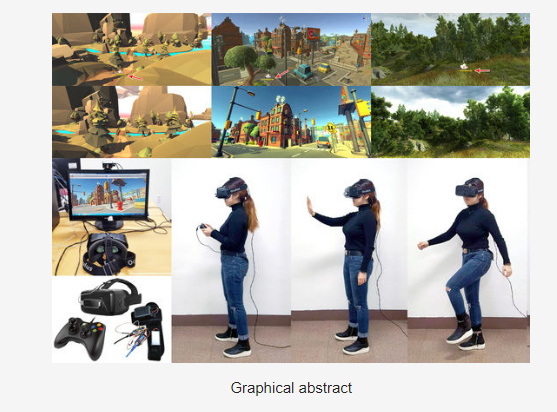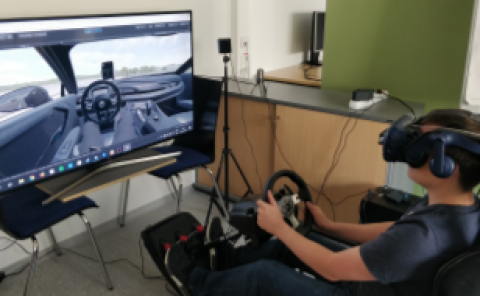A Study on Immersion and VR Sickness in Walking Interaction for Immersive Virtual Reality Applications
PubDate: May 2017
Teams: Catholic University of Pusan
Writers: Jiwon Lee;Mingyu Kim ;Jinmo Kim

Abstract
This study analyzes walking interaction to enhance the immersion and minimize virtual reality (VR) sickness of users by conducting experiments. In this study, the walking interaction is composed of three steps using input devices with a simple structure that can be easily used by anyone. The first step consists of a gamepad control method, which is the most popular but has low presence. The second step consists of a hand-based walking control interface, which is mainly used for interaction in VR applications. The last step consists of a march-in-place detection simulator that interacts with the legs—the key body parts for walking. Four experiments were conducted to determine the degree of direct expression of intention by users in the course of walking interactions that can improve immersion, presence, and prevent VR sickness in VR applications. With regard to the experiments in this study, survey experiments were conducted for general users using the Wilcoxon test, a presence questionnaire, and simulator sickness questionnaire (SSQ). In addition, the technical performance of the VR scenes used in the experiment was analyzed. The experimental results showed that higher immersion was achieved when interactions that felt closer to real walking were provided in VR. Furthermore, it was found that even control methods with a simple structure could be used for walking interactions with minimal VR sickness. Finally, a satisfactory presence was found in VR if the user was able interact using his or her own legs



